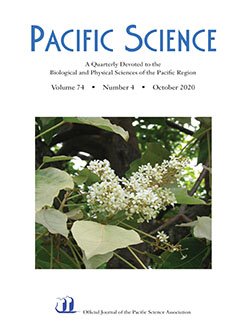Kukui was an important element to indigenous Hawaiian agroforestry and retained some of its importance throughout Hawai‘i's history. We examine the historical ecology and trends of kukui, including a review of the ethnobotany. We use current and historical remote imagery to map kukui canopy on the five largest Hawaiian Islands. Kukui is still widespread through the state, being a significant component in many novel low-land forests. However, kukui is declining, having lost an average of ∼58% of total canopy cover over the last 70 years. Spatial trends suggest that kukui likely did not spread much following the large-scale shifts in Hawaiian socio-ecosystems that accompanied the arrival of colonial powers. We suggest that the footprint of kukui in Hawai‘i closely approximates the extent of indigenous agroforestry and forest alteration.
How to translate text using browser tools
8 March 2021
State of the State Tree: Historical and Modern Ecology of Kukui (Candlenut, Aleurites Moluccanus) in Hawai‘i
Noa Lincoln,
Qian Zhang,
Qi Chen
ACCESS THE FULL ARTICLE
<
Previous Article
|

Pacific Science
Vol. 74 • No. 4
October 2020
Vol. 74 • No. 4
October 2020




